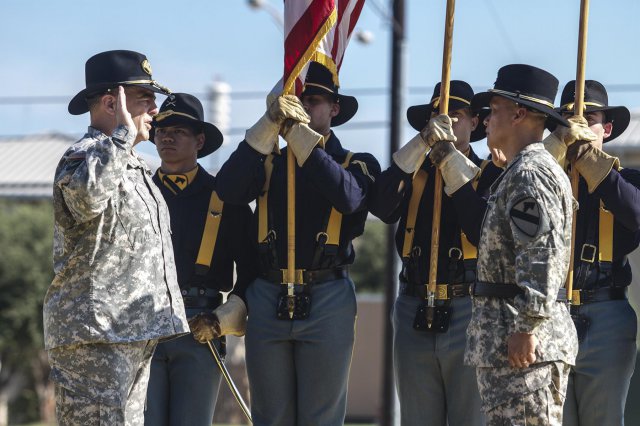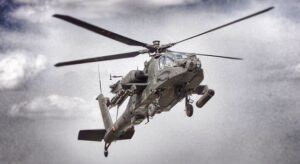Army Commission’s Landmark Report Will Shape Budget Battle
Posted on

UPDATED: Pentagon official rejects Commission’s Apache plan as “too expensive”
WASHINGTON: After nine months of often frantic effort, the National Commission on the Future of the Army delivered its final report yesterday afternoon. Now comes the hard part. It’s 2016, not 2015, that will be the year of the commission, because their 208-page report will set the baseline for this year’s service budget debates.
For starters, the commissioners’ first Capitol Hill hearing has already been tentatively scheduled (although not publicly announced) for 2pm on February 10th, before the House Armed Services Committee subcommittee on Tactical Air & Land Forces. A Senate Armed Services committee hearing is in the works.
More important, expect the commission report to be referenced in every hearing, study, and op-ed on the Army for at least the rest of 2017. Expect every proposal to be compared to the commission’s 63 recommendations and assessed either as agreeing, amending, or rejecting the report.
In fact, the first commentary saying the commissioners had gotten it wrong came out during their press conference about the final report. “The Commission largely missed its primary if unstated task: healing the deep rift between the active Army and National Guard,” wrote retired Lt. Gen. David Barno of American University. “The Commission report missed a huge opportunity to provide fresh thinking on multicomponent units…. integrating forces from the active Army, the National Guard, and the Reserve,” said his AU co-author, scholar Nora Bensahel.
“I suspect they did not read through the report, which is understandable — it’s a long report,” said commissioner Kathleen Hicks, eliciting laughter at a Defense Writers’ Group breakfast this morning. “Page 67/68 of the report very specifically states that the commission recommends the Army pursue multi-component units.”
It’s also worth noting that the first page of the report has a section which begins, “In our travels, it was disheartening to sometimes hear elements of discord from within the Army’s ranks—and some from without—pitting the Army National Guard against the Regular Army. This is unacceptable….”
[UPDATE: Then, this afternoon, a senior defense official took exception to the report’s highest-profile provision, to keep four AH-64 Apache attack helicopter battalions in the National Guard rather than draw down to zero, as proposed by the Army’s controversial Aviation Restructure Initiative.

AH-64E Apache
[UPDATE: “It’s more expensive and we don’t have the money to do it,” the senior official told me, “but Congress asked for the commission. [In the 2017 budget,] we have resubmitted our ARI, but we expect to get into a protracted debate with congress based on the outcome of the commission.”]
But of all the many things the report does, probably most important is that it provides much-needed ammunition to those in Congress who want to increase the 2017 Pentagon budget above last fall’s budget deal. The law charged the commission to make recommendations “in a manner consistent with available resources and anticipated future resources” — but, said commission chairman retired Army Gen. Carter Ham, “none of us knew what that meant.”
So the commission took the initiative by declaring that the president’s 2016 budget request — never fully realized — was the minimum amount acceptable for the Army, and it proposed reforms whose net cost would require a significant increase in the Army budget. It likewise said the current planned endstrength — 450,000 active-duty troops and 530,000 in the Reserves and Guard — was the “minimally sufficient force.” (That jibes nicely with what the presumptive Secretary of the Army, Eric Fanning, said in his confirmation hearing; that “if confirmed, I would look for ways to reverse as many of the combat cuts that the Army made last year as possible.”)
The commission didn’t estimate the cost of most recommendations in detail, but just one it did cost out, the overhaul of Army aviation, is about $4 billion over the next five years. That’s a lot of money to most people, but small change compared to, say, the Joint Strike Fighter program (about $100 million per plane, or 10 for a billion) or an Ohio Replacement submarine (up to $8 billion each). As budget guru Todd Harrison said yesterday, Army programs tend to be so small relative to warships and airplanes that they don’t register much on the Pentagon’s Richter scale.
That might just put the commission’s recommendations in a political sweet spot: big enough to attract attention, small enough to wedge into the budget — either the base budget or the increasingly ill-defined Overseas Contingency Operations fund. And with many presidential candidates lamenting the state of the military, the next budget cycle might have even more room for Army plus-ups.
“The report’s also clear if you tried to do all of those options to make up shortfalls that we identified, even with our offsets, added funding would be needed for the Army,” commissioner and former Pentagon comptroller Bob Hale said.
But “it’s always darkest just before the dawn,” said Hale. “The defense budget is cyclical, we’re toward the end of this drawdown — it’s probably at the bottom and starting up. I think in another administration, there’s a possibility of a broad budget deal.”
Correction: An earlier version of this article stated that Dr. Bensahel and Lt. Gen. Barno were affiliated with the Center for a New American Security. In fact, they are no longer with CNAS and are now at American University.
Subscribe to our newsletter
Promotions, new products and sales. Directly to your inbox.
